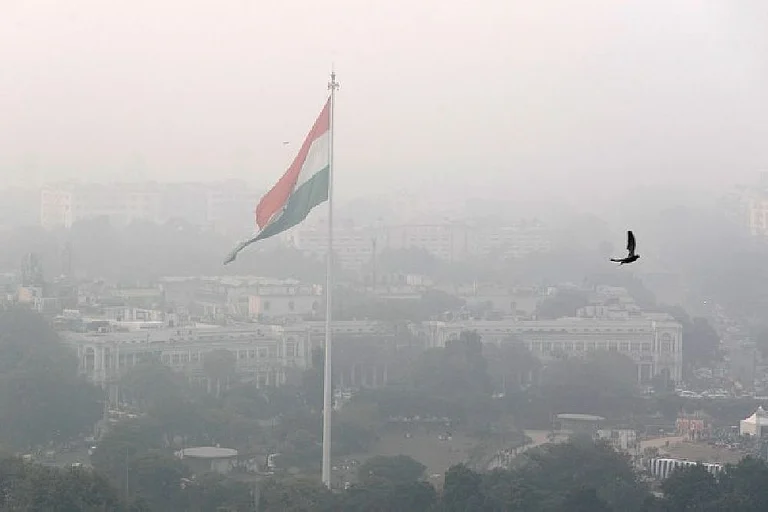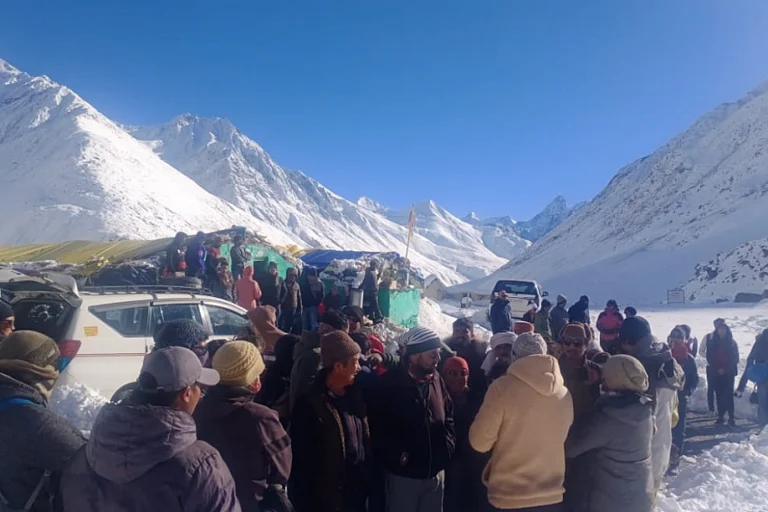“It takes skill and experience and ruthlessness —and above all sheer luck— for individuals to succeed in Indian politics.”
— Neerja Chowdhury, ‘How Prime Ministers Decide’
One often wonders what goes on inside the power corridors of the top leadership. How many people does it take to get to a decision? What contributes to it? Is it all about power or are our leaders focused on what’s best for the people? It is not always a simplistic answer as a yes or a no.
Veteran journalist Neerja Chowdhury’s new book ‘How Prime Ministers Decide’, published by Aleph Book Company, explores the working of six Indian prime ministers and the people around them behind some of the key decisions that have defined the course of history for Indian politics.
In conversation with Outlook, Chowdhury talks about the prime ministers, their strategies, the impact on the current government, and more.
1. You’ve said in the book that “Modi’s decision-making phenomenon is a complete break from the past”. Can you elaborate?
Firstly, it is a break from the past in the sense that the BJP at Centre has reached the position on its own with a very clear majority, further strengthened in 2019. For decades, it was the Congress and its allies that ruled the country. Even Vajpayee’s BJP was a coalition unlike now where it is single-handedly led by Mr Modi.
Secondly, the style of functioning of the Modi government is a complete break from the past. We haven’t seen this kind of use of social media as well as his communication skills which are adept at a kind of political marketing never seen before. He has been able to amplify his message manifolds.
More significantly, it is the agenda of the BJP and RSS that is now unfolding. Article 370 was abrogated as soon as the BJP came to power in 2019, triple talaq has been outlawed, the Ram Mandir will be completed in January 2024, and there are talks for the Uniform Civil Code (UCC) now. Modi and his ‘new BJP’ are pursuing this agenda with the view to fulfilling the civilisational project of the saffron party and moving towards creating a Hindu Rashtra — whether it is in the ambit of the Constitution or otherwise, it is moving in that direction very convincingly.
2. In context of the current government’s political marketing tactic and Modi’s need for everything to be grand, do you think many important decisions become subservient behind the facade of grandness?
It is clear by now that Mr Modi wants to lead a legacy. He thinks big. And he does not shy away from springing surprises. We saw this during demonetisation. So, everything has to be ‘bhavya’ for him — the parliament building, the Central Vista project, Sardar Patel statue, his outreach to the Indian diaspora at Madison Square, Ram Mandir, etc. But yes, it is true that not much attention has been paid to the detailing of these decisions.
3. At the book launch, you said that you find Indira Gandhi very fascinating. What do you think sets her apart from the other prime ministers?
When I was researching for my book, I asked young people who their favourite PM was, and all over the country, they, particularly women, often opted for Indira Gandhi. Partly, it was because she was a woman too but partly it’s because she was strong and she knew how to get the better of her enemies and become a mass leader. Similarly, I find her fascinating because she was a tough leader who could be quite ruthless. She governed like a dictator during the Emergency. But she won a Hindu constituency in 1980 without losing her Muslim constituencies. Even though she lost her Muslim vote bank during the Emergency, they went back to her. She was a Hindu without being anti-Muslim.

4. There has also been a comparison drawn between Indira Gandhi and Narendra Modi. What do you have to say about that?
Many people compare Indira Gandhi to Narendra Modi — both of them are sakht (rigid) leaders, both have a majority government, both have a strong Prime Ministers Office (PMO) through which they rule and both have a following beyond their party. In both cases, their ministers depend on them to be their leader. But as Karan Singh, who I quote in the book’s epilogue, says, ‘If there’s a prime minister Narendra Modi can be compared with, it is Jawaharlal Nehru’, for he (Karan Singh) thinks that Modi would like to be another Nehru and even surpass him.
5. Indira Gandhi had a unique connection with the RSS, as you have explored in the book. This connection or bond has not really been seen in the Congress governments that followed. Do you agree? What do you think changed?
Indira Gandhi had her own channel with the RSS to know what they were doing, and how they were doing it. Every leader at the top wants their own information channel, not just relying on the Intelligence Bureau (IB) or party colleagues. They have friends, media people, and others who give them this information. But it is not necessary that she had a strong bond with the RSS. She did not reply to the letters that RSS leadership wrote to her during the Emergency, and that soured their relationship briefly. It was only before the next elections that she asked them to withdraw their support from the polls but by that time the Janata Party was already moving forward.
But Indira Gandhi has privately admitted that the RSS support was partly responsible for the consolidated Hindu votes she won in the 1980 elections. The RSS saw her as a Hindu woman. It was a political move. In a parliamentary democracy, it is all about dialogue. You cannot give up dialogue even with your opponents, especially to run a plural and diverse country like India. She knew the nature of power and she understood ground-level India.
6. You’ve also said that in 1980, Vajpayee was trying to secularise his image, whereas Indira Gandhi was ’Hinduising’ the image of Congress. Can you elaborate?
It’s true. Apart from her Hindu chehra, there were two other reasons why RSS was trying to support Indira Gandhi in 1980. She was Hinduising her persona and the politics of the Congress in order to offset the lost Muslim support during the Emergency. On the other hand, Vajpayee was trying to secularise his image. He had written critically in the newspaper about the RSS, that it should open its doors to non-Hindus. Moreover, the person leading the Janata Party then, Babuji Jagjivan Ram, was a Dalit and the upper caste RSS vote base did not react too favourably. That was probably another reason why the RSS may have very tacitly supported Indira Gandhi in the 1980 election.
7. The current government is doing the exact opposite of what Vajpayee was then trying to do. Their focus is on creating the Hindu Rashtra through the means of religious polarity. Would you agree?
It is a contrast. But the Hindu-Muslim divide has always paid the BJP a rich dividend. Even during Vajpayee, it was raised as an issue and then it subsided. However, the Hindu-Muslim polarisation that took place in 2013 before the general elections, the Muzaffarnagar riots, for instance, is different. But not just Modi, Indira Gandhi also used this kind of polarisation tactic in 1984 when the Sikhs called for a separate Khalistan state and the Hindu consolidation was against it.
The contrast here is that the current government has a sure-shot formula for consolidating the Hindus behind the party.
8. At the book launch, you mentioned that it was difficult to draw information from the Modi government. What was the process of getting information of the past governments and was that easier in any way?
I realised very early on —and for every government, not just the current one— that people will not talk while the prime minister is in office. And I realised that with the incumbent government, especially at a time when Prime Minister Modi is making big calls for a third term, it was very difficult to get people to talk freely.
So I felt that it will not do justice to the Modi phenomenon. I even made a rough draft for a chapter but I abandoned it because it would not have done justice to the subject I was dealing with. Therefore, it is a project for the future when I can get a real picture of what goes on behind the scenes.
9. Based on your research, do you think a coalition works better for India or a single-party government?
People call coalitions ‘khichdi government’. Of course, there are more players so everybody will try to extract a pound of flesh but that doesn’t mean important decisions were not made in coalition governments. Between VP Singh’s government and the Modi government, there were 25 years of coalition at Centre and big decisions were taken. But my key takeaway after writing this book was that a multi-layered, loud, assertive, diverse and colourful plural country like India must be run like a coalition whether it is a brute majority government, a minority government or a multi-party alliance.
10. Who is your favourite Prime Minister from the ones you’ve written about?
I might have been able to answer this question before I wrote the book but now that I have written it, I must say that I find each of them very fascinating in their own way. The underbelly, the manipulation, and all that Indian politics represents is marvellous — how each one addressed the issues thinking of the future, how they addressed major challenges confronted, and the issues they inherited. Nobody got a clean state. It is a continuum and each of them contributed to it — the good and the bad.


























